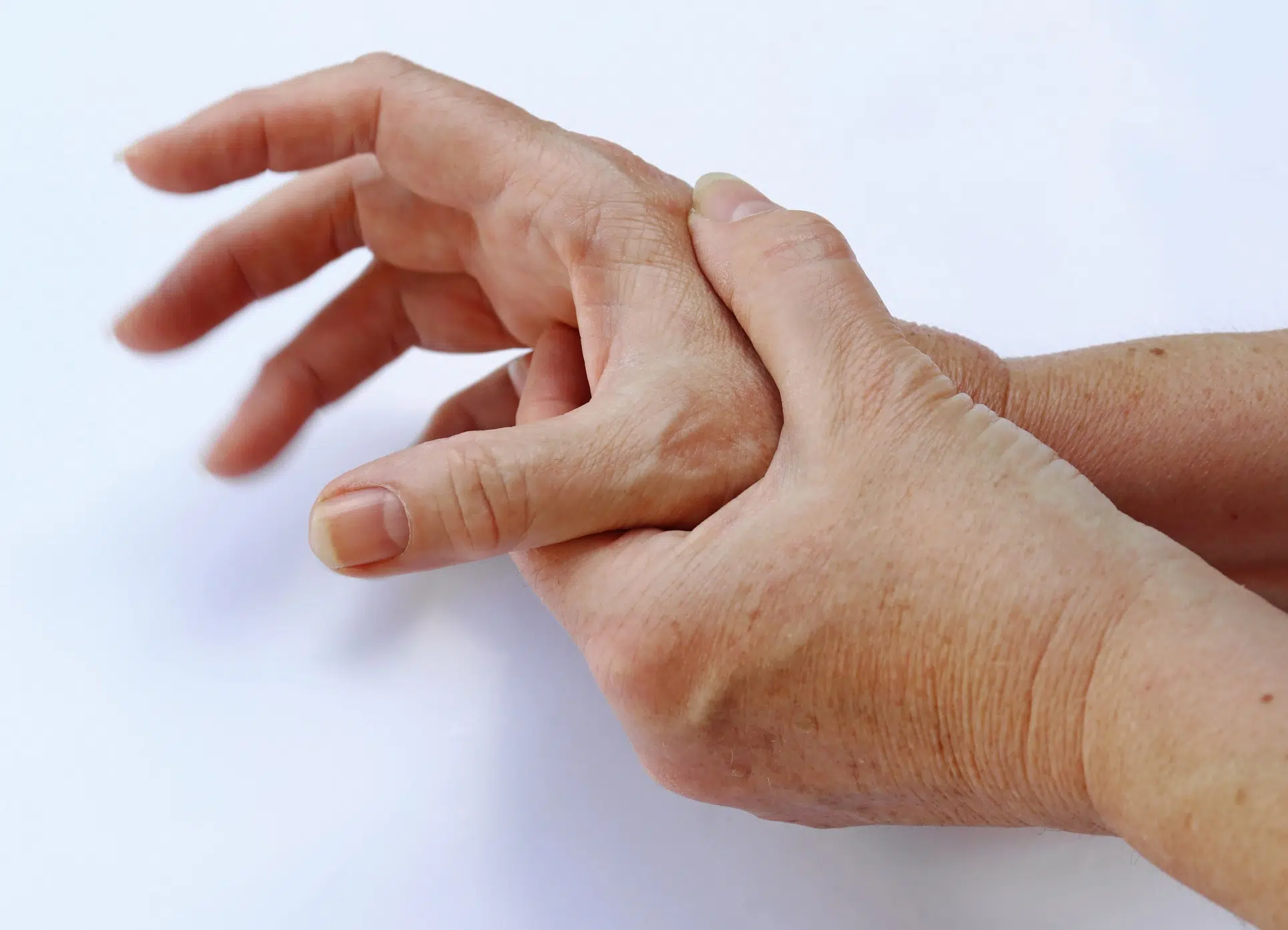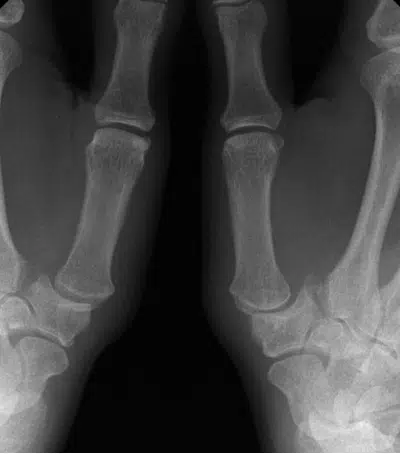Thumb arthritis is osteoarthritis of the base of the thumb, i.e. wear of the cartilage between the trapezium and the base of the 1st metacarpal. The base of the thumb is subjected to considerable stress during daily activities (such as gripping, pinching or turning objects), which explains the progressive destruction of the cartilage.
Over time, the cartilage covering the joints thins out and there is direct contact between the bones, which is painful. In more advanced stages, bone spurs (osteophytes) may appear in the joint, causing the metacarpal to slide outwards (thumb deformity).
This pathology particularly affects women over the age of 40, but men can also develop painful osteoarthritis of the thumb. Treatment of rhizarthrosis varies according to the severity of symptoms, and can range from conservative measures to surgical interventions, such as thumb prosthesis or trapezectomy.

